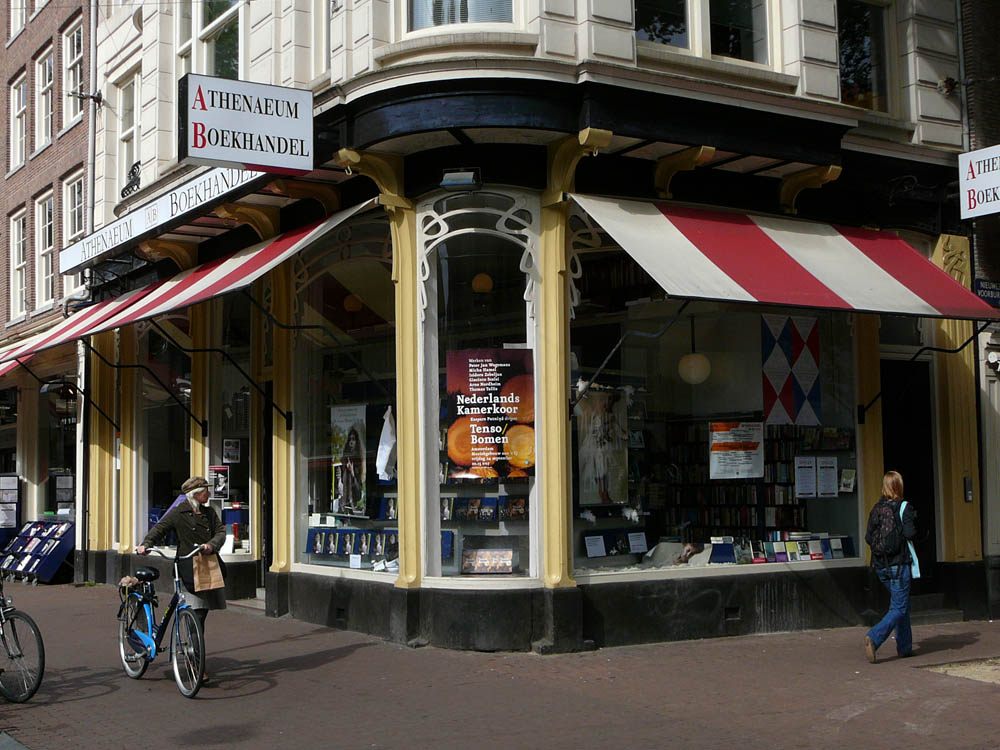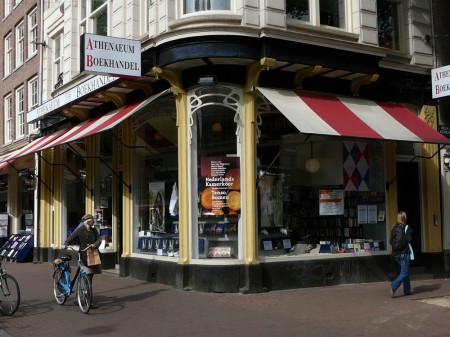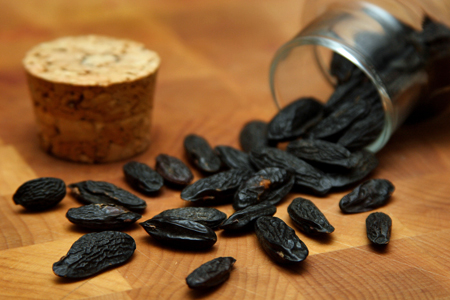15\05\2012
Written by Jurriaan

From perfume industry to bookshop

Column by Isadora Lebouille
If you are familiar in Amsterdam, you know the Athenaeum bookshop on the Spui square is a wonderful place to wander around. It offers all kinds of national and international magazines and you always leave with a nice stack of fresh reading material. However, less people are familiar with the fact that this well-known bookshop was founded with funds from the perfume industry.
The classicist Johan Polak (1928-1992) had inherited money from his mother, Sara Schwarz, who was the heir of family company Polak & Schwarz Essence: a perfume- and flavourings company. With the money he started the publishing company Polak & Van Gennep in 1962, and the Athenaeum bookstore just four years later and went down in history as a legendary publisher.
It is fascinating to see how the creation of perfumes has evolved to a billion dollar industry. It started in the 19th century with perfumers and chemists, who started small companies that developed fragrances. Slowly but surely a few of these companies developed to perfume houses. Halfway through the 19th century Holland played an important role in the development of the fragrance- and flavouring industry. Fragrance and flavour would almost always go hand in hand in these companies.

Chemists already developed many synthetic ingredients in the 19th century, such as cinnemaldehyde (cinnamon) in 1834; which means that they succeeded in creating the natural scent of cinnamon in a laboratory. This has contributed to the enormous growth of the industry, because it was cheaper, and because it contributed largely to the creativity of the perfumers because of the large amount of possibilities in chemical connections. A large breakthrough was the development of the synthetic ingredient coumarin. Originally natural coumarin comes from the tonka bean (pictured above), and it smells vanilla- and hay like.
Polak & Schwarz started producing fruit aromas, paint components and oils in 1889. By 1930 the company had become an important producer of different scents worldwide. In 1958 this family business was sold and continued under the name of IFF (International Flavors & Fragrances).
IFF has expanded to one of the five big multinationals of the perfume world, next to Givaudan and Firmenich for example. They receive orders for fragrances from companies such as Estée Lauder, l’Oréal and Procter & Gamble. These companies in turn have the licences to market perfume lines for many fashion houses and celebrities.
Having their own perfume line is very important for the major fashion houses. Perfume generates money. It has an image that is highly individual and luxurious, but it also has a very big reach; perfume is a mass product.
This is illustrated by the reply of Yves Saint Laurent to the question: ‘What portion of Yves Saint Laurent revenues are accounted for by perfumes?’, which was ‘Eighty-three point five.’ (Chandler Burr, A year inside the perfume industry in Paris and New York, 2007)
And this is how the world of perfumes contributed to the development of the Athenaeum bookstore at Spui!
